
Special delivery, saving lives
By : Michael Gibb
Targeting remedies at a precise spot in the human body is a huge challenge. There are physical obstacles as well as technological and financial ones to consider. But better aim increases the chances of combating diseases such as cancer, improving efficiency, lowering costs and ultimately saving lives. At CityU, teams across campus are working on systems that promise greater accuracy for transporting drugs or cells to a more specific address within an organism in order to achieve better therapeutic outcomes.
Therapeutic microrobots
The beneficiaries of research conducted by a team led by Professor Sun Dong, Head of the Department of Biomedical Engineering, are cell-based therapy, regenerative medicine and more precise treatment for diseases such as cancer.
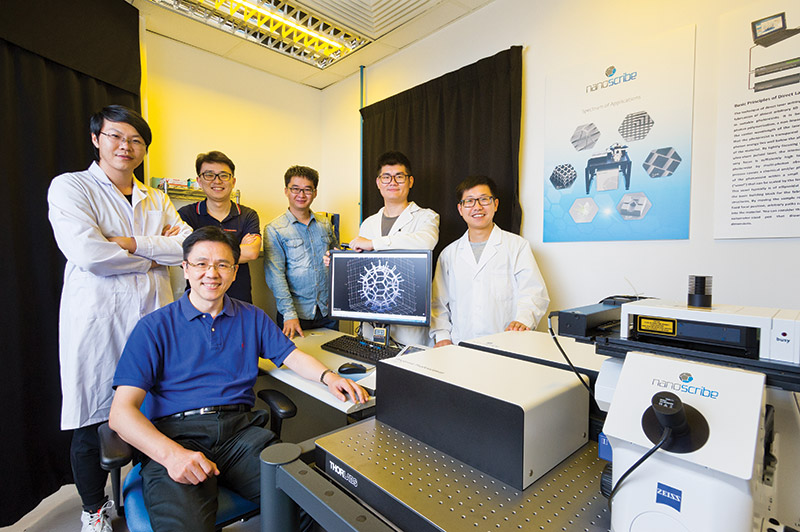 Professor Sun (front row) and his research team. Their research, published in 2018 in Science Robotics, concerns the development of a magnetic 3D-printed microscopic robot that can carry cells to precise locations in live animals.
Professor Sun (front row) and his research team. Their research, published in 2018 in Science Robotics, concerns the development of a magnetic 3D-printed microscopic robot that can carry cells to precise locations in live animals.
“This could be a huge leap for the emerging industry of cell surgery robotics,” said Professor Sun.
Stem cells that can repair damaged tissues or treat tumours could be conveyed by microrobots into the body. Manufactured using 3D laser lithography, such microrobots offer an alternative to invasive surgery and a means of reducing the side effects caused by drugs and drug resistance issues.
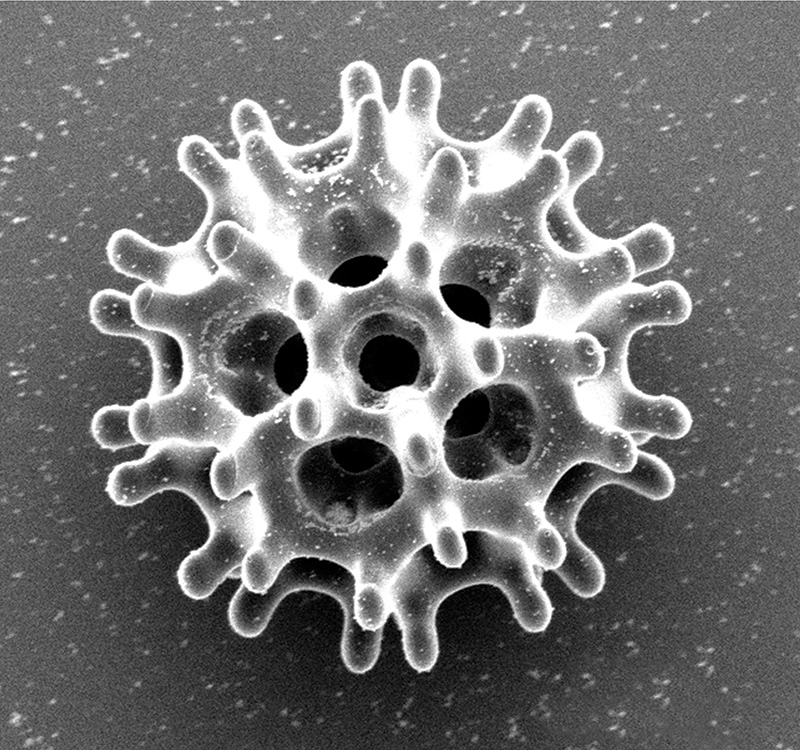 The microrobot is highly effective at carrying cell loads through the bloodstream. The team says its research represents the first known instance of a microrobot able to deliver cells in a live body. Computer simulations indicated that out of the various designs of the microrobots, the diameter of which is similar to a single strand of human hair, a porous burr-shaped structure seems to be best for carrying cell loads and moving through the bloodstream and body fluid.
The microrobot is highly effective at carrying cell loads through the bloodstream. The team says its research represents the first known instance of a microrobot able to deliver cells in a live body. Computer simulations indicated that out of the various designs of the microrobots, the diameter of which is similar to a single strand of human hair, a porous burr-shaped structure seems to be best for carrying cell loads and moving through the bloodstream and body fluid.
In the research, fluorescent cells carried by microrobots were injected into laboratory mice where they were successfully transported to the targeted area, passed through the blood vessels and released to the surrounding tissue.
The team is now conducting a pre-clinical study on delivering stem cells into animals for the precise treatment of liver cancers, and clinical studies on humans are expected to take place in two to three years.

Time lapsed images of the microrobot moving in the yolk of a zebrafish embryo.
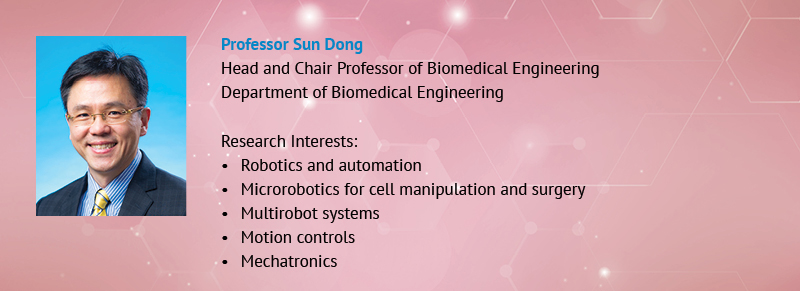

Cost-effective transport
Among the many challenges in delivering drugs is finding ways to produce a cost-effective transport mechanism that would make a particular strategy viable. An innovative concept pursued by a team led by Dr Le Minh, Assistant Professor in the Department of Biomedical Sciences, focuses on producing highly pure extracellular vesicles (EVs) from red blood cells in large quantities and at one-hundredth of the usual cost.
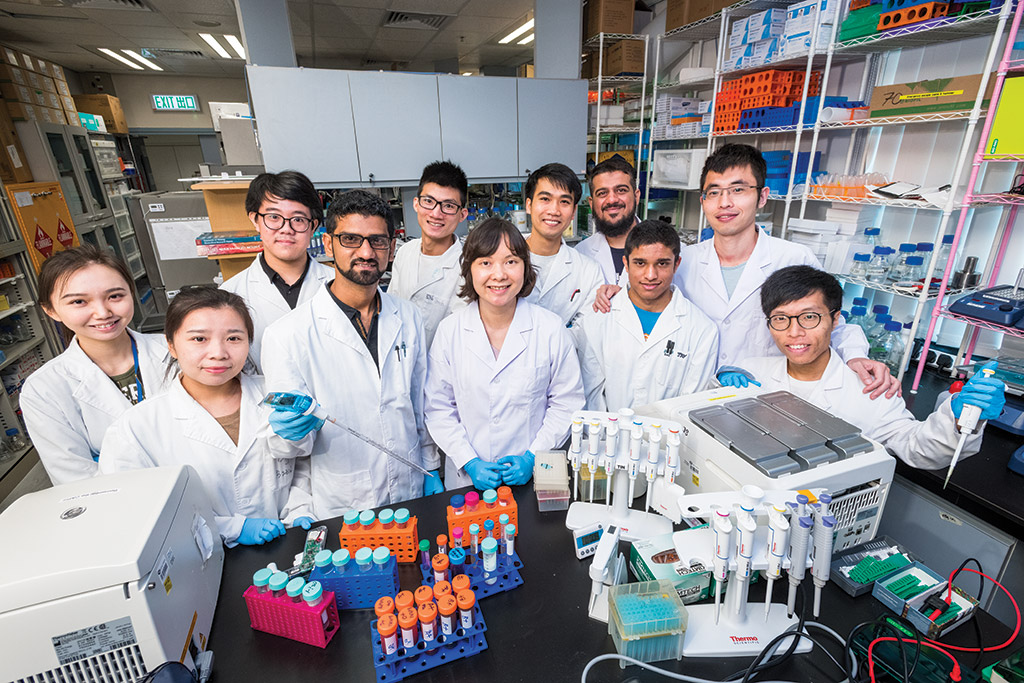 The research team produces EVs from red blood cells as drug carriers for treating cancer.EVs facilitate intercellular communication by transporting proteins and other large molecules through the membrane between cells.
The research team produces EVs from red blood cells as drug carriers for treating cancer.EVs facilitate intercellular communication by transporting proteins and other large molecules through the membrane between cells.
“Previous studies have shown that EVs are especially good delivery vehicles for blood cells, but the biggest challenge was how to get enough EVs to deliver RNA drugs, which are expected to be a more effective treatment for cancer,” Dr Le said.
The usual purification methods required to produce the kind of EVs needed were stringent, time-consuming and low in yield. The CityU team has tried to overcome this challenge using human red blood cells to produce the EVs.
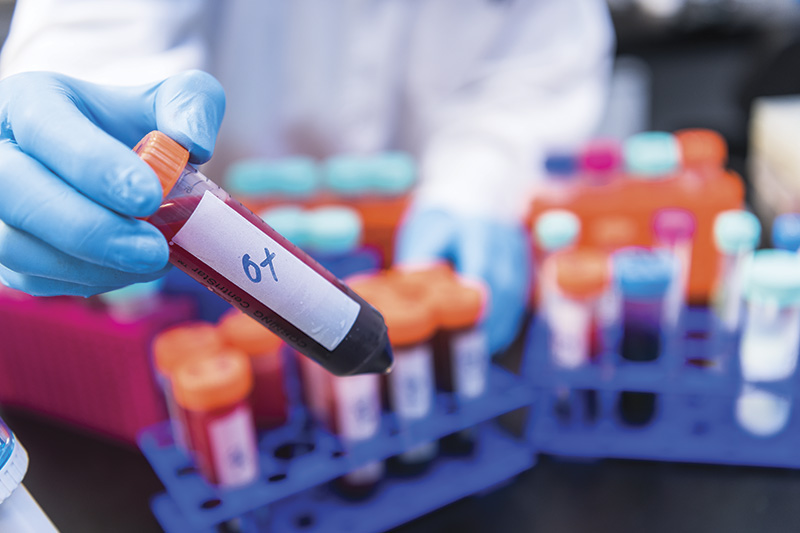 Samples of the red blood cells-derived EVs.“They are the most abundant cell type in the body and can be obtained relatively easily,” Dr Le said.
Samples of the red blood cells-derived EVs.“They are the most abundant cell type in the body and can be obtained relatively easily,” Dr Le said.
The team took a sample of red blood cells and purified them using ultracentrifugation. To the team’s surprise, a thick layer of red EVs from a blood sample of only 50 ml was recorded. Dr Le said that over 1,000 times as many EVs were produced at one-hundredth the cost compared to existing methods.
In addition, in trials using mice, 80% of leukemia cells exposed to these EVs from red blood cells were fluorescence positive, i.e. RNA drugs were delivered to 80% of the cancer cells, with no side effects.
The findings, published in Nature Communication in 2018, showed that red blood cells-derived EVs are a simple and efficient platform for RNA drug delivery, and are safe, scalable and applicable to any gene therapy.

Super-strong milli-robots
In what seems to be research that runs close to science fiction, a CityU team has paved the way for better drug delivery in the human body using a tiny, soft robot with caterpillar-like legs that is capable of carrying heavy loads and adaptable to adverse wet and dry environments.
 Professor Wang (front row, right), Dr Shen Yajing, Assistant Professor in BME who leads the research (front row, left) and members of the CityU team who have developed the novel tiny, soft robot.The robot has a remarkable loading ability. Laboratory tests show that it can carry a load 100 times its own weight, which is comparable to a human lifting a 26-seat minibus! This power makes the robot extremely suitable for applications in a harsh environment, such as delivering a drug to a designated spot through the digestive system.
Professor Wang (front row, right), Dr Shen Yajing, Assistant Professor in BME who leads the research (front row, left) and members of the CityU team who have developed the novel tiny, soft robot.The robot has a remarkable loading ability. Laboratory tests show that it can carry a load 100 times its own weight, which is comparable to a human lifting a 26-seat minibus! This power makes the robot extremely suitable for applications in a harsh environment, such as delivering a drug to a designated spot through the digestive system.
Two key features of the robot are highlighted in the research. First, the robot has hundreds of less than 1 mm-long pointed legs, which look like tiny hairs, and which greatly reduce the contact area and hence friction with the surface.
Laboratory tests show that the multi-legged robot has 40 times less friction than a limbless robot in both wet and dry environments. This means the robot can move efficiently inside surfaces within the body lined with, or entirely immersed in, body fluids such as blood or mucus.
In addition, the robot is fabricated from a silicon material called polydimethylsiloxane (PDMS), which is embedded with magnetic particles that enable it to be remotely controlled by applying an electromagnetic force.
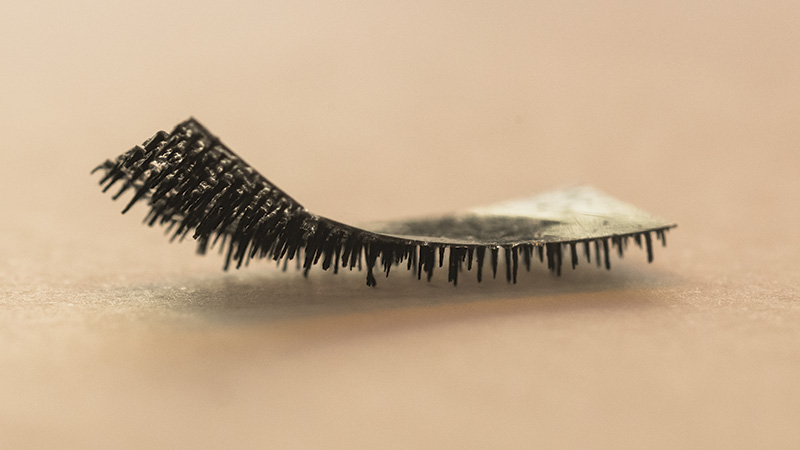 The highly agile, multi-legged soft robot is adaptable to adverse environment and can carry a heavy load.“Both the materials and the multi-leg design greatly improve the robot’s hydrophobic property, and the rubbery material is soft and can be cut easily to form robots of various shapes and sizes for different applications,” said Professor Wang Zuankai of the Department of Mechanical Engineering. He conceived of this research idea and initiated the collaboration among the researchers.
The highly agile, multi-legged soft robot is adaptable to adverse environment and can carry a heavy load.“Both the materials and the multi-leg design greatly improve the robot’s hydrophobic property, and the rubbery material is soft and can be cut easily to form robots of various shapes and sizes for different applications,” said Professor Wang Zuankai of the Department of Mechanical Engineering. He conceived of this research idea and initiated the collaboration among the researchers.
Before conducting further tests on animals and eventually in humans, the research teams will focus on finding a biodegradable material for further development, studying new shapes and adding extra features. The aim over the next two to three years is to create a biodegradable robot that will decompose naturally after completing its drug delivery mission.



